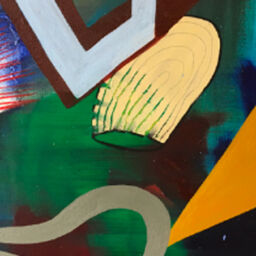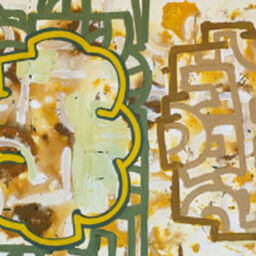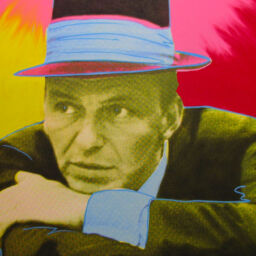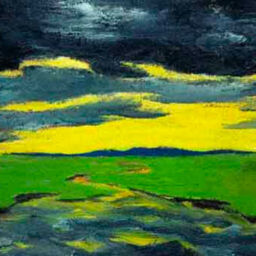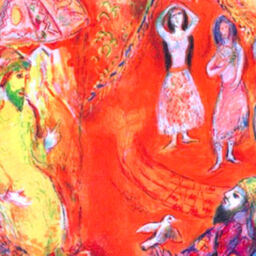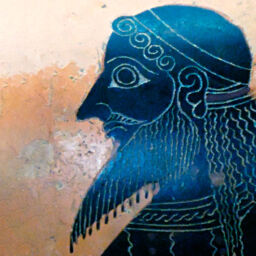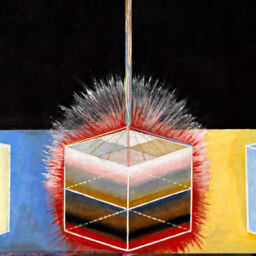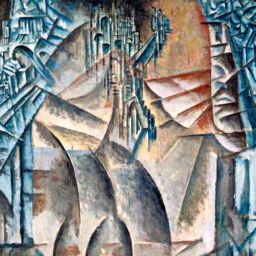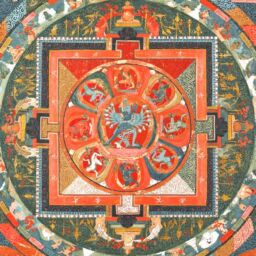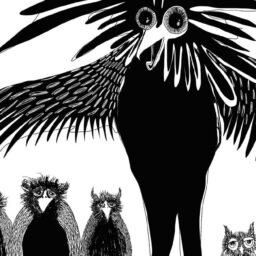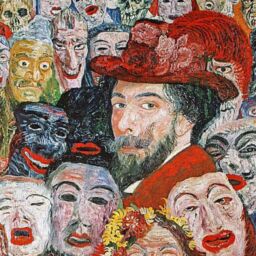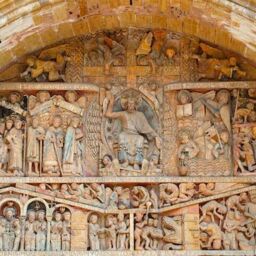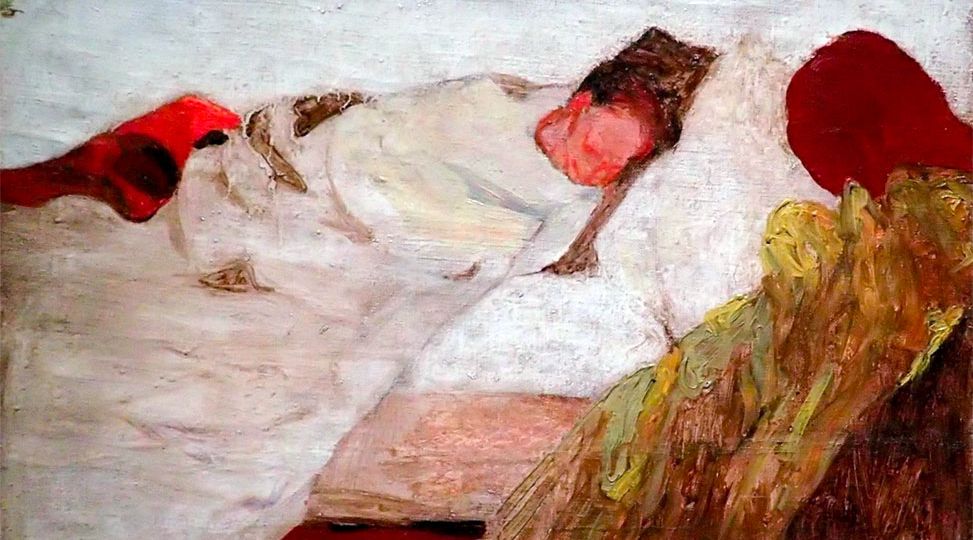
Dreaming The Dream On
Maryann Barone-Chapman, January 8, 2013
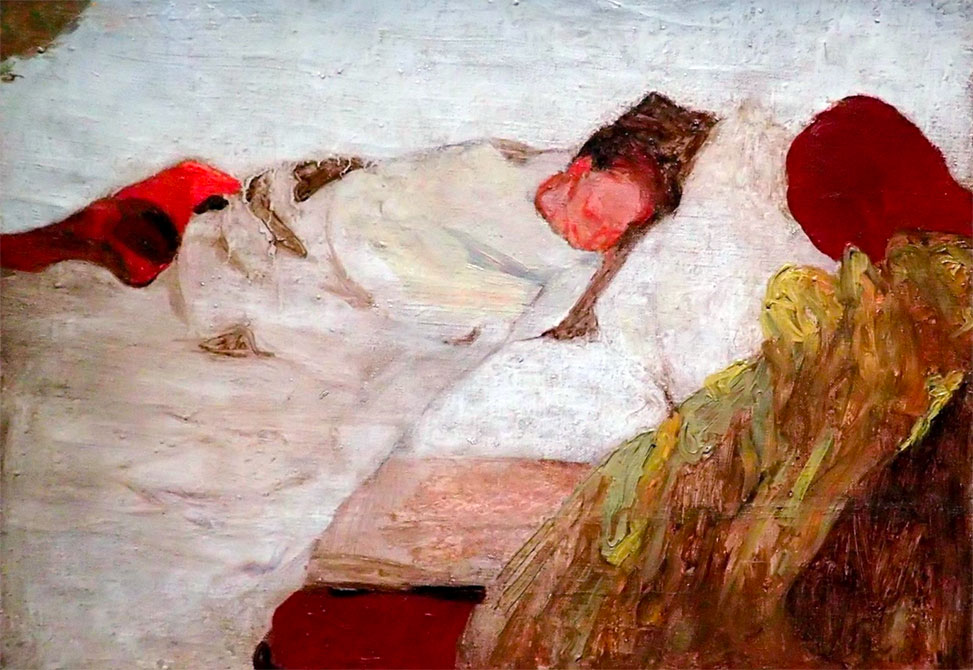 Typology has to do with natural inclination meeting environmental forces. Earlier in my career as a Jungian analyst, I became interested in typology as a way of understanding a false self-adaptation to fit in with the typology of a family system. Often these adaptations continue into other group settings such as organizational life until they are no longer functional. The function of introvert and extravert is neither biologically or energetically masculine nor feminine, despite Jung’s (CW 6, para. 597-598) early attempts to differentiate the sexes through typological function, similar to his essay, “Two Kinds of Thinking” (CW 5, para. 4-46). Too often the principle of ‘masculine’ and ‘feminine’ is concretized by conformity to cultural stereotypes. Due to such stereotypes, a preference for introverted feeling (Fi) will have trouble relationally as will extraverted feeling (Fe), depending on where it exists within the intra-psychic space of type and archetype, where myth lives on. I mention the Feeling function here because in both a female and male patient it is a function that was ‘severed’ by aspects of Senex and Witch.
Typology has to do with natural inclination meeting environmental forces. Earlier in my career as a Jungian analyst, I became interested in typology as a way of understanding a false self-adaptation to fit in with the typology of a family system. Often these adaptations continue into other group settings such as organizational life until they are no longer functional. The function of introvert and extravert is neither biologically or energetically masculine nor feminine, despite Jung’s (CW 6, para. 597-598) early attempts to differentiate the sexes through typological function, similar to his essay, “Two Kinds of Thinking” (CW 5, para. 4-46). Too often the principle of ‘masculine’ and ‘feminine’ is concretized by conformity to cultural stereotypes. Due to such stereotypes, a preference for introverted feeling (Fi) will have trouble relationally as will extraverted feeling (Fe), depending on where it exists within the intra-psychic space of type and archetype, where myth lives on. I mention the Feeling function here because in both a female and male patient it is a function that was ‘severed’ by aspects of Senex and Witch.
Uncovering the myths we live by, consciously and in Shadow, becomes a lifetime adventure through what I call “dreaming the dream on.” This notion, I believe, was hidden within the following quote from Jung. Though for some it had a literal interpretation only to collective myth, Jung is talking about the contents of dreams as a meeting of personal and collective myths, where archetype and type become useful cohorts in the development of consciousness. “Even the best attempts at explanation are only more or less successful translations into another metaphorical language…. The most we can do is to dream the myth onwards and give it a modern dress. And whatever explanation or interpretation does to it, we do to our own souls as well” (CW 9i, para. 259-305).
In dreaming the dream on to discover personal myths and their connection to complexes, I will be using John Beebe‘s (2004a) model to analyze dreams. In particular I wish to show how archetypal development and typological development parallel each other. Working with the unworkable for the patient/analysand to be able to think the unthinkable appears in the consulting room through the analysts’ use of self—including their personality typology—evident in the dynamics of transference and counter-transference. Beebe’s ‘Archetypal Complexes Carrying the Eight Functions’ (see figure, below) sets out parallel organizers of complexes and behavior between archetypes and corresponding personality type function in both ego-syntonic organization and the shadow in ego-dystonic organization. In the meeting of natural inclination and the environment, the development of Shadow typology can become a reflection of what has/hasn’t happened to the Self type within the Basic Orientation. The dream ego seems to know this.
Key ingredients for the process may be found as: use of another metaphorical language (archetypes), exploration of myth (personal and collective), a goal toward the center (Self), and ultimately the development of consciousness. Such development would be impossible without glint of gems hidden in the Shadow. The archetype of the Self was the culmination of Jung’s lifetime work on describing archetypes and their patterns of behavior within the collective unconscious. The totality of the Self is ‘peopled’ by archetypes that include the Hero/Heroine, Mother/Father, Anima/Animus, and Puer/Puella, and their counterparts in Shadow. Discovering this model changed both my understanding and use of typology as well as shedding new light on Shadow contents.
Of particular note are dream dynamics between archetypes appearing in functional numbers 1 and 5, 2 and 6, 3 and 7, and 4 and 8. These, in Beebe’s model, show the relationship between ego and shadow in specific areas of personality.
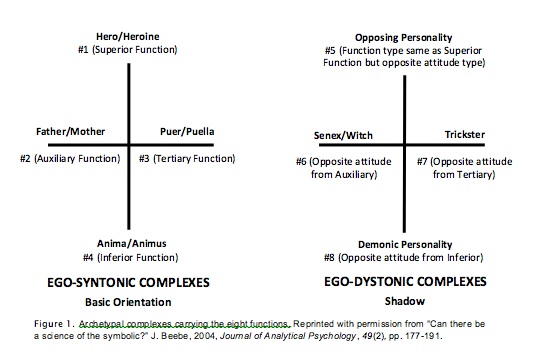
My interest in typology is equal to my interest in complexes. Beebe’s model offers both through access to a view of the archetypes of our more conscious functioning, and the archetypes that lurk in our Shadow, with corresponding assignment of the typological functions emerging in all of these places, set out over two orientations, roughly described as the “ego-syntonic” and “ego-dystonic” areas of our personality. In the Basic (syntonic) Orientation on the left, the superior function is seen through the archetype of Hero or Heroine, secondary function as Mother or Father, tertiary as Puer or Puella, and the inferior function as Anima or Animus. In the Shadow (dystonic orientation), which sets up what Jung (CW16, p.87) called “a shadow government of the ego,” Hero/Heroine becomes an Opposing Personality, Father/Mother becomes Senex/Witch, Puer/Puella the Trickster (bi-gendered by all accounts), while Anima/Animus becomes the Demonic Personality. In shadow each function takes on the opposite attitude type. The goal of assigning archetype to typological function within dream interactions is to assist the analysand/dreamer in the development of consciousness. In effect Beebe’s Eight-Function Model reveals a particular ‘object relations’ of archetypal and personality type dimension, to amplify Jung’s (CW 8, para. 505; CW 16, para. 320) assertions about the nature of dreams:
- A fundamental compensation to conscious attitude.
- The actual situation in the unconscious.
- A message from the unconscious.
- Commentaries on psychological complexes.
Psychic Products with a Purpose
When I work with patients who are mother bound, for instance, the witchy aspect of the Witch/Senex position tends to stand out as a persecuting projection until the internal persecutor can be faced. Until I discovered application of Beebe’s model, I waited until the ‘missing fourth’ inferior function (Anima/Animus) began to play out within the patient (and ergo myself). A clinical example was a patient with a preference for Thinking who wanted to recite the four functions as if to make me proud. But unconsciously he wanted to let me know something important about his emerging self. He came to the fourth, but couldn’t remember it. His recitation happened to stop short of the Feeling function, his own fourth function and a match to how he projected his Anima onto women to do the feeling for him, as his fourth function, Fi, was as yet “missing” a conscious connection. His relationship to his personal mother had been interrupted at six years of age when she suffered postpartum depression. My patient was sent to live with an aunt in the city while his mother took the two youngest boys with her to the family farm. This Anima wound was not only inflicted on him through the mother’s absence, but by the stern performance-driven personal father who instilled limit-setting on feelings.
Contents of the shadow are by nature more difficult to get hold of even on a good day. An example is a woman analysand I will refer to as ‘the Dreamer,’ who was plagued by a personality split mirroring the ongoing argument between her parents. In a dream she showed up as twins. One was quiet and could play by herself (like her father, Ti) and the other was very precocious as she hung upside down from a tree (like her mother, Te), reflecting the inherent nature of the Opposing Personality. From the outset of our work her battle seemed to reflect inferiority about not being an extravert, though she knew nothing about personality types. That made her Basic Orientation (ISTP, see chart below) difficult to get hold of; she suffered as a young woman under mother’s thumb because she did not do the Thinking function like her mother unless she was angry.
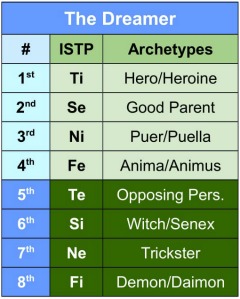 Initially her superior and inferior functions were experienced as upside down and backward along the vertical evaluating meridian. Fi was turning up either as the Opposing Personality or the Hero/Heroine and extraverted thinking (Te) either as the Demonic Personality or Anima/Animus. In effect she was spinning around between evaluating or relating, and regulating or understanding as Shadow complexes often do when they are activated. Once she began to develop language through the discovery of archetype and type, she could better play with what the objective psyche (the unconscious) was offering her. Before we identified her ISTP typology, we talked out what roles the dream characters were playing. It was then we noticed how within the sessions she could speak her mind more freely as a Te of the Opposing Personality than from the introverted thinking (Ti) of the Heroine. In time we found her dreams contained an ever-present theme of sabotage, in an arc of persecution running between the Opposing and Demonic Personalities whenever the ‘Witch’ was activated. No wonder she was led to use these personalities as a counter-offensive, even if they did somewhat falsify her true personality. The only unchanging pieces of the clinical puzzle, so far as figuring out her true conscious orientation was concerned, were extraverted sensing (Se) in the auxiliary Mother/Father and introverted intuiting (Ni) in the tertiary Puella/Puer. But as she did not have a good enough Mother/Father installed, there was an unreliable Se function turning into the Si Witch in Shadow, which I view as the fulcrum of her inferiority complex around knowing and not knowing. Here was an example of an analysand/patient using the auxiliary function Se as if it were superior—she could engage and enjoy female friends by paying attention to them on a sensate level. Backing this up was Ni as divining what these friends needed from her, just as she had done with her mother from the time she was quite young, followed by the same angry response. Usually missing in action were her native Ti Heroine and Fe Animus.
Initially her superior and inferior functions were experienced as upside down and backward along the vertical evaluating meridian. Fi was turning up either as the Opposing Personality or the Hero/Heroine and extraverted thinking (Te) either as the Demonic Personality or Anima/Animus. In effect she was spinning around between evaluating or relating, and regulating or understanding as Shadow complexes often do when they are activated. Once she began to develop language through the discovery of archetype and type, she could better play with what the objective psyche (the unconscious) was offering her. Before we identified her ISTP typology, we talked out what roles the dream characters were playing. It was then we noticed how within the sessions she could speak her mind more freely as a Te of the Opposing Personality than from the introverted thinking (Ti) of the Heroine. In time we found her dreams contained an ever-present theme of sabotage, in an arc of persecution running between the Opposing and Demonic Personalities whenever the ‘Witch’ was activated. No wonder she was led to use these personalities as a counter-offensive, even if they did somewhat falsify her true personality. The only unchanging pieces of the clinical puzzle, so far as figuring out her true conscious orientation was concerned, were extraverted sensing (Se) in the auxiliary Mother/Father and introverted intuiting (Ni) in the tertiary Puella/Puer. But as she did not have a good enough Mother/Father installed, there was an unreliable Se function turning into the Si Witch in Shadow, which I view as the fulcrum of her inferiority complex around knowing and not knowing. Here was an example of an analysand/patient using the auxiliary function Se as if it were superior—she could engage and enjoy female friends by paying attention to them on a sensate level. Backing this up was Ni as divining what these friends needed from her, just as she had done with her mother from the time she was quite young, followed by the same angry response. Usually missing in action were her native Ti Heroine and Fe Animus.
The twins dream was not just a compensation for subjective psyche, but a picture of an upside down and backward nature to both orientations. No amount of time on exploring the assignment of archetypes in her basic orientation proved fruitful until expressions of her internal saboteurs began to reveal themselves repeatedly and in dreams. Not until we found a lazy Fe function sitting around waiting for others to affirm her importance to them could the feeling of “being done to” as a victim become understood by her Ti Heroine. The nature of her Animus had been difficult to find and there was little use in my offering her the typology answer until she was ready to find it herself. Finding Fe as the inferior function gave rise to some validating self-empathy for a constant state of anxiety. Here and elsewhere, ‘finding’ simply means connecting the assignment of type and archetype in dreams to her life myth as a victim of extraverts. Difficulty finding Animus as a function replayed the constant disappointment with a mother who in effect seemed to create and loathe the Dreamer for having a shy Ti/Se type preference opposite to her own. What kept our relationship from falling apart from a negative mother transference was my having access to Ti, since it is my auxiliary function. I was in effect holding the Good Parent archetypes through a Ti language she could understand, until those archetypes could be properly installed within her (see ISTP/ENTP chart below).
In effect, dreams kept connecting the Dreamer to an early basic orientation as a shadow child who had learned Trickster’s ways early on by hiding things from her mother and making her believe she was incapable. Through the use of Beebe’s Eight-Function Model described above, she came to discover the shadow of her Se as the undermining/castrating aspect of her Si Witch who colluded with an Fi Demonic Personality to critically appraise her endeavors in the world; a voice very much like her mother’s. Beebe (2004b, p. 83) found the Witch to be potentially as good as it was bad when thinking about L. Frank Baum’s The Wizard of Oz, but also refers to her as “the shaming, blaming, limit-setting female parent” who “fights dirty” to “cast spells that immobilize in an underhanded way.” This ‘negative witch mother’ is all this, which I summarize as “undermining/castrating” (though Beebe saves ‘undermining’ for the Demonic in the model described above), because I have found the archetype of the negative witch mother to carry more than one complexion in her activities. But the Witch archetype also includes the redemptive aspect as the Wise Old Woman who uses craftiness to teach lessons not easily learned by the Child in a world where the Father portion of the Good Parent (auxiliary) is present but absent. In this way the Witch can also make a woman’s Animus through “undermining/teaching.” The Dreamer’s mother is both a dirty fighter and a tough teacher, making it doubly difficult to know whether to keep her on your side or pour water over her. In the Alchemical view of Jungian clinical work the solutio phase is the tears and laughter that melt the Witch, as did a bucket of water on the bad witch in Oz.
Through Ni, the Dreamer’s tertiary function, Puella was imaginatively deployed by her Trickster (Ne) to get close to people who mattered in the form of popular women at work and in social life to compensate for social insecurity. However the defensive aspect of the Shadow kept taking control over these relationships to enviously attack others she admired for their extraverted abilities, through Te of the Opposing Personality. In effect, her Opposing and Demonic Personalities took over a core complex as the battle between an awkward introverted (emotionally absent, no animus) father and an extraverted (too present animus) mother. She kept trying to kill off extraverted qualities in me that reminded her of her mother, and in so doing, was forever killing off the seeds of her future, preventing her from having an Animus (Fe); a parallel process to the personal myth she was brought up with: “You will forever be the little girl with no power.”
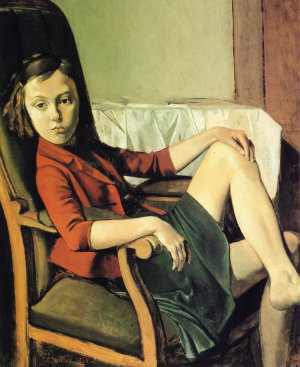 Parental identification can be positive or negative in complex terms. Here I want to differentiate the auxiliary function’s role in psyche to work as a supportive and nurturing couple/parent from negative parental complexes that can work through any of the basic orientation and shadow functions. Often the problem with one’s mother and father has something to do with an anima or animus problem in the opposite sex parent. In this dreamer’s case, her mother had more animus than her father, while her father had more anima than her mother. It wasn’t just a problem for my analysand, the Dreamer, but for her parents’ marriage as well.
Parental identification can be positive or negative in complex terms. Here I want to differentiate the auxiliary function’s role in psyche to work as a supportive and nurturing couple/parent from negative parental complexes that can work through any of the basic orientation and shadow functions. Often the problem with one’s mother and father has something to do with an anima or animus problem in the opposite sex parent. In this dreamer’s case, her mother had more animus than her father, while her father had more anima than her mother. It wasn’t just a problem for my analysand, the Dreamer, but for her parents’ marriage as well.
The Dreamer Dreams On
With her permission, I have been able to discuss the psychological complexes of someone who, in feeling persecuted by extraversion, found the key to her Fe function and began to animate first in dreams and later in life. One such dream follows:
I had to get from A to B. I was travelling in some form of vehicle and trying not to veer off the road and crash. At times it felt like quite a perilous road. I saw another vehicle ahead of me leave the road and crash into a ravine. I had the sense a man and woman were in the back seat but they weren’t clearly in focus. Their positive energy felt very good for me. I felt if I could combine their energies—his practical energetic approach and her nurturing measured approach, I could progress effectively in my vehicle and in the world.
I felt responsible for getting them from A to B safely, but knew in a sense that I’d have to harness their energy in order to do so.
Next, I was surprised at realizing I had the face of an older woman. I did not like that person, that face. I looked at pictures of myself as a young woman of 13-15 years old, and began to wish I were she again. In comparison, the younger me in the photograph seemed happier, more carefree, etc. But the longer I looked at the younger me, the more my idealized feelings toward her began to fade and I saw that what she had was very limited, and would remain stuck in that moment in a photograph.
I spent some time in a sidetracked state, wishing I was that younger woman again, idealizing about her existence. At some point I accepted who I was now and started to feel positive about what lay ahead. I began to feel more distant from the younger me in the photograph.
I began to focus on my journey in the vehicle again and pay more attention to the male and female onboard. They started to come into clearer focus. I felt like they could play an important role in moving the vehicle forward.
Getting from A to B required the Ti of the Heroine’s journey, the task of understanding, hesitant to implement for fear of taking a wrong step, dreamt as the perilous “too narrow” path. Without a connection to her Fe ‘knight’ (Animus) sleeping in the inferior function, she was too frightened to move. Animus is a woman’s protector. In order to partner with this other, she needed to form an inner couple that would be ‘behind her all the way,’ something she had never had. She was waylaid on the journey, mesmerized by a photo of herself as a young carefree teen, the Puella, with no appreciation of the Wise Old Woman she was becoming because she has only known her as her evil Witch mother. It cannot be stressed often enough that, when a function within the Basic Orientation (here Se) has not been properly installed as an archetype, the Shadow of the function (here Si) becomes a sort of ‘permanent understudy’ to the lead actor in type and archetype. The Dreamer’s attachment and fascination with the weak Ni Puella identification ‘side-tracked’ her journey from the A of childhood to the B of adulthood. Holding the space for her extended childhood allowed a larger playing field to re-establish relationships within her splintered psyche. The Heroine in the dream spoke the ego-syntonic truth, “At some point I accepted who I was now.”
When she dreamed the dream on, the Dreamer described an altered psychological situation:
The older me became more interesting, a more three-dimensional character. When I had looked at my photo as a teenager there was a sense of nostalgia around it I have experienced before. I have had several dreams like this of a photograph of my mother’s mother as a young woman. When I look at her photograph she starts to move and come to life. I’ve always felt happy when this happened, as I never felt I got to know her as a child, perhaps in the way I didn’t get to know my 13-year-old self.
The picture of grandmother contained, in fact, both Puella (Ni) and Witch (Si) in constructive forms of imagining and verifying. Grandmother’s photograph enlivens her by an association to a safe inheritance of Animus through a woman who was also able to love her. Puella, no longer mesmerized as Trickster’s puppet, began a relationship with an internalized functional couple with whom reciprocal care caused her to conclude wisdom was more valuable than eternal youth. Still struggling with either-or choices to remain the good girl, integrating the shadow of this couple, the Witch-Senex as Si, would affirm and verify the co-existence of wisdom and youth, light and shadow, in effect releasing the persecutory hold of the toxic parental complex.
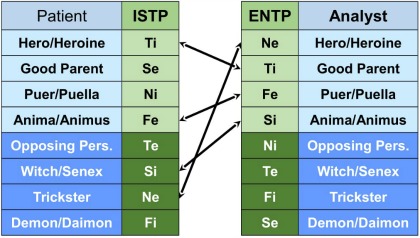
When the Dreamer and I talk this out she reveals a view of Si as a function she needs to pull her out of her black or white judging Fi Demonic tendencies. This is the unconscious request, the transference in dream and consulting room, where the Dreamer induces the analyst to supply what is missing. I am referring to the Dreamer’s wish to take hold of my Animus in Si, what she describes as “an important role in moving the vehicle forward” in the dream to help her implement an Fe Animus within her Basic Orientation. In effect this dynamic between us served to release the child/Puella from the grasp of Ne as Trickster and begin to integrate another use of Ne as Heroine within my Basic Orientation. The child/Puella in me can speak the language of her Fe Animus to coax it back into life simply by affirming and relating. A wounded Animus in a woman can give her the curse of believing she is either too much or too little.
I saw here that the goal had been revealed. One could not go beyond the centre. The centre is the goal and everything is directed towards that centre…. Out of [this insight] emerged a first inkling of my personal myth. After this dream I gave up drawing and painting mandalas. The dream depicted the climax of the whole process of the development of consciousness. (Jung, 1963, p. 224)
This Dreamer, I believe, is on her way home, through a process of learning to understand her inner world, coming to consciousness through the organizing language of archetype and type. For analysts following a patient/analysand’s working through unspeakable trauma in dreams, the whole of these two languages together may be greater than the sum of its parts.
References
Beebe, J. (2004a). “Can there be a science of the symbolic?” Journal of Analytical Psychology, 49(2), 177-191.
Beebe, J. (2004b). Understanding consciousness through the theory of psychological types. In J. Cambray and L. Carter (Eds.), Analytical psychology: Contemporary perspectives in Jungian analysis (pp. 83-115), Hove and New York: Brunner Routledge.
Jung, C. G. (1953-1977). The collected works of C.G. Jung (Herbert Read, Michael Fordham and Gerhard Adler, Eds.; R. F. C. Hull, Trans.) (Vols. 1-20). London: Routledge; Princeton NJ: Princeton University Press.
Jung, C. G. (1963). Memories, dreams, reflections. London: Collins and Routledge & Kegan Paul.
Header Image
Edouard Vuillard, “Sleep,” 1891




